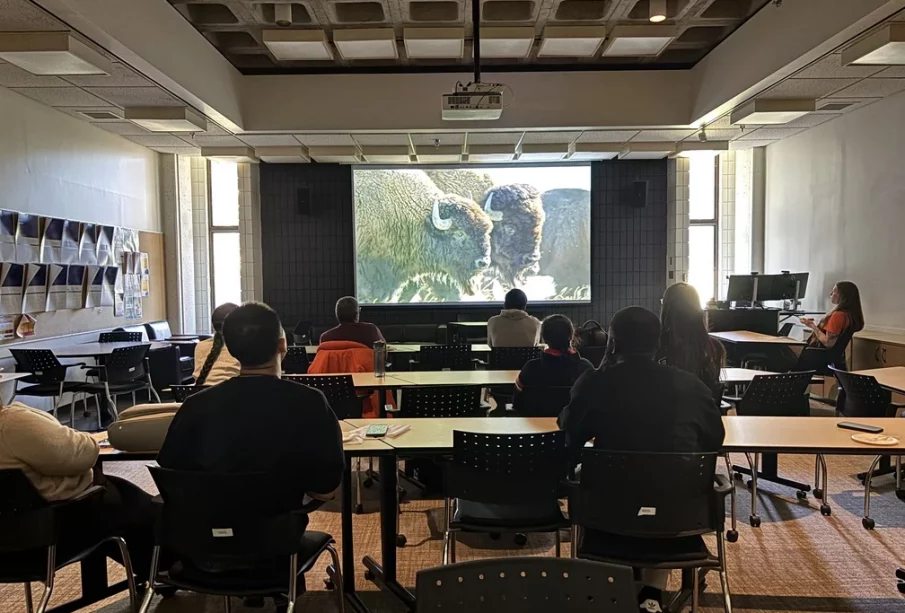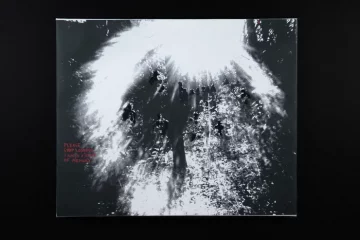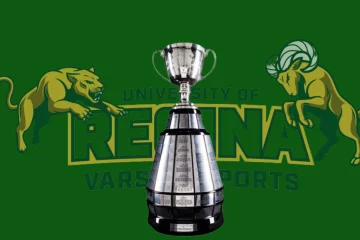Raising awareness about Indigenous struggle amongst International students
On Sept. 29, a film screening event was organised by the Global Learning Centre of the International Student Services at the University of Regina (UofR). At the event, the audience watched a documentary film titled Bring Them Home/Aiskótáhkapiyaaya, directed by Daniel Glick, Ivan Macdonald, and Ivy Macdonald. The film spotlights the decades-long initiative of the Blackfeet Indigenous community to bring the American Buffalo/Bison, or Iinnii in Siksiká, back to Blackfeet Reservation.
Importance of the Bison in the community
Historically, Bison were vital to the Blackfeet community. They provided sustenance, shelter, and tools and held great value for cultural practices. They are considered as relatives in the community. In the 1800s, increased colonization of the west led to the mass killing of Bison due to growing demand for hides and bones. By late 1800s, the Bison were hunted to near extinction.
“When we are talking about Buffalo, we are talking about our relation, our relatives,” said Leroy Little Bear in the documentary.
It took a century to bring them home
Over a century later, the Bison finally came home to the Blackfeet Reservation, owing to the relentless efforts of the Blackfeet community in bringing them back. Bringing back the Bison to the Blackfeet Reservation symbolized reconciliation and healing of the generational traumas in the community caused by the Bison’s slaughter.
The documentary is narrated by Lily Gladstone and features many Blackfeet elders and members like G.G. Kipp, Bob Burns, Leonard Bastien, Theda New Breast, Leroy Little Bear, Paulette Fox, and many more.
There’s a lot of misinformation out there. We want to make sure that misconceptions and misunderstandings are taken away. -Cassandra Loustel
The importance of knowing and learning
At the screening International Engagement Coordinator, Cassandra Loustel said, “I remember at the end of the film, sitting and just reflecting, and I thought, other people need a chance to see this.”
Loustel grew up close to a reserve and went to a school which focused heavily on Indigenous knowledge. She has carried that knowledge with her through her life. She mentioned working at the university provides her a chance to provide correct information to students, especially international students who might not be aware about Canadian Indigenous history. “There’s a lot of misinformation out there. We want to make sure that misconceptions and misunderstandings are taken away,” she said.
Events like this are organised a couple of times in a semester by the International Student Services with the hope that students not only get exposure to Indigenous knowledge but also learn to respect and admire the resilience of Indigenous peoples. Bring Them Home gave these students a chance to learn the history and helped them appreciate the value of the land and its relationship with humans.
Thoughts of the attendees
Oluwakemi Adebayo, a third year international student pursuing a social work degree mentioned that she had never heard about the Bison until she attended the film screening event. “This was something very different, something I had never heard about, and it gave me another perspective of the Indigenous people,” she shared.
The film compelled Adebayo to draw relations between the colonization of Nigeria, her home country, and in Canada. “At the point we got our independence [in Nigeria], we were left to do things on our own, to have our own governments, to own our lives the way we want it. But it’s so different for the Indigenous peoples [in Canada] because the settlers came in and took over their land, and they lived with them. They are still here.”
“There are different compartments of healing, and it is not a one-day journey. And we need to support them,”said Adebayo, highlighting the significance of healing in Indigenous communities.







